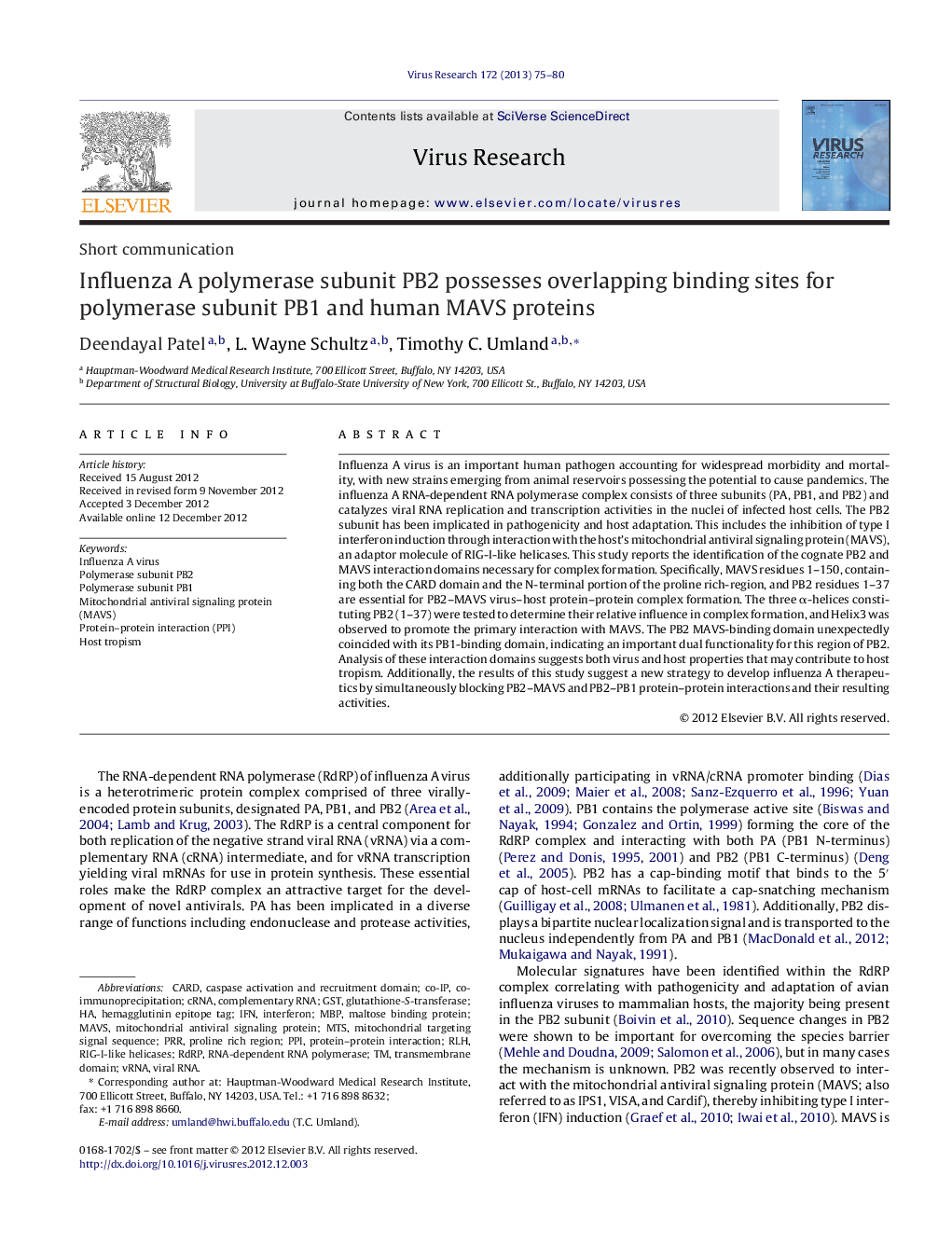| Article ID | Journal | Published Year | Pages | File Type |
|---|---|---|---|---|
| 3428585 | Virus Research | 2013 | 6 Pages |
Influenza A virus is an important human pathogen accounting for widespread morbidity and mortality, with new strains emerging from animal reservoirs possessing the potential to cause pandemics. The influenza A RNA-dependent RNA polymerase complex consists of three subunits (PA, PB1, and PB2) and catalyzes viral RNA replication and transcription activities in the nuclei of infected host cells. The PB2 subunit has been implicated in pathogenicity and host adaptation. This includes the inhibition of type I interferon induction through interaction with the host's mitochondrial antiviral signaling protein (MAVS), an adaptor molecule of RIG-I-like helicases. This study reports the identification of the cognate PB2 and MAVS interaction domains necessary for complex formation. Specifically, MAVS residues 1–150, containing both the CARD domain and the N-terminal portion of the proline rich-region, and PB2 residues 1–37 are essential for PB2–MAVS virus–host protein–protein complex formation. The three α-helices constituting PB2 (1–37) were tested to determine their relative influence in complex formation, and Helix3 was observed to promote the primary interaction with MAVS. The PB2 MAVS-binding domain unexpectedly coincided with its PB1-binding domain, indicating an important dual functionality for this region of PB2. Analysis of these interaction domains suggests both virus and host properties that may contribute to host tropism. Additionally, the results of this study suggest a new strategy to develop influenza A therapeutics by simultaneously blocking PB2–MAVS and PB2–PB1 protein–protein interactions and their resulting activities.
